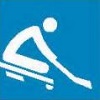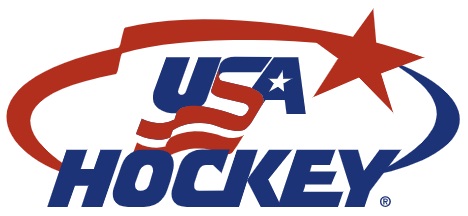 a Winter Games Paralympic Sport
a Winter Games Paralympic SportGoverning Bodies
Introduction:
Sledge hockey, also known as Sled hockey in American English, and Para ice hockey in international competition, is an adaptation of ice hockey for players who have a physical disability. The sport was invented in the early 1960s at a rehabilitation center in Stockholm, Sweden, and played under similar rules to standard ice hockey. Players are seated on sleds and use special hockey sticks with metal “teeth” on the tips of their handles to navigate the ice. Playing venues use an ice hockey rink.
While sledge hockey is a part of the Winter Paralympics program, it only includes a category for men which doubles as a mixed-sex division, allowing only a limited number of female athletes to participate. A division devoted exclusively for women does not exist.
History of the Sport:
Two men from Sweden designed the sledge in the 1960s because they wanted to continue to play hockey despite their physical disabilities. Their design included two skate blades on a metal frame that allowed the puck to pass underneath. They completed the ensemble by including two round poles with bike handles for sticks. Although there are many restrictions to the measurements and weight of the sleds used in the Paralympic Games, the basic design of modern sleds remains true to the original 1960s simple sleds for kids. These sleds were then made to be used for hockey.
Despite the initial lack of interest and awareness in the few years that followed, competition between sledge hockey teams started up in 1971 that included five teams in Europe. In 1981, Great Britain established their first sledge hockey team, and that was shortly followed by Canada in 1982. It was not until 1990 that the United States developed their first ice sledge hockey team. Sled hockey continued to expand when Estonia and Japan developed their teams in 1993. Sledge hockey was introduced to the Winter Paralympics in 1994, with Sweden claiming the first gold medal. Since 2010, sledge hockey has been a mixed-gender event. Sledge hockey has become one of the most popular events in the Winter Paralympics since its introduction in the 1994 Winter Paralympics program.
On November 30, 2016, as part of an effort to improve and unify the marketing of its self-sanctioned sports outside of the Paralympic Games, and citing that the word “sledge” had differing meanings between languages, the International Paralympic Committee announced that it would henceforth refer to sledge hockey as “Para ice hockey” during the Paralympics and other sanctioned events, and that its sanctioning body would be renamed World Para Ice Hockey.
Rules – How to Play the Sport:
The sticks have a blade curved at one end in a manner similar to regular ice hockey, and generally six to eight metal teeth at the opposite end of the blade for maneuvering and propulsion. Movement is achieved by using the metal teeth as a means to grip the ice and push oneself forward. The metal teeth cannot be too pointy nor protrude farther than 1 cm beyond the stick, to prevent damage to the ice or injury of other players. Other equipment includes a helmet with facemask, shoulder and elbow pads, shin guards, and hockey gloves. Pants and footwear are at the discretion of both the player’s comfort and need. Goaltenders wear the standard mask, chest and arm protector, blocker pad and catching glove, plus a leg pad if they so desire and a stick with teeth on both the paddle as well as the knob of the stick. Additionally, goalies may make modifications to their equipment: a common mod is to attach the plastic outsoles of track spikes onto the outer part of their gloves to aid in lateral mobility.




